| Intl. Notebook | Jul 26 2024 |



We have a tremendous amount of material on burlesque in Pulp Intl., yet it's been eight years since we put together a full collection of mid-century burlesque dancers, go-go girls, and strippers. That day has arrived again. Above and below you see some of the better shots we've run across of late, featuring the famous and the obscure, the restrained and the explicit, the domestic and the foreign, and the blonde, red, brown, and brunette. Where possible we've identified the performer, such as above—that's Carol Ryva, sometimes known as Carol Riva, Carole von Ryva, Cara Rive, et al, a French dancer who rose to fame during the early 1960s. Other familiar faces you'll see are Lilly Christine, Maria Tuxedo, Gay Dawn, Yvonne Ménard, and Virginia Bell.


























The Follies Theater at 337 S. Main Street, Los Angeles, 1946.

















Debra Paget, who performed one of the most provocative screen dances ever in 1959's De indische grabmal.
| Femmes Fatales | Feb 24 2023 |

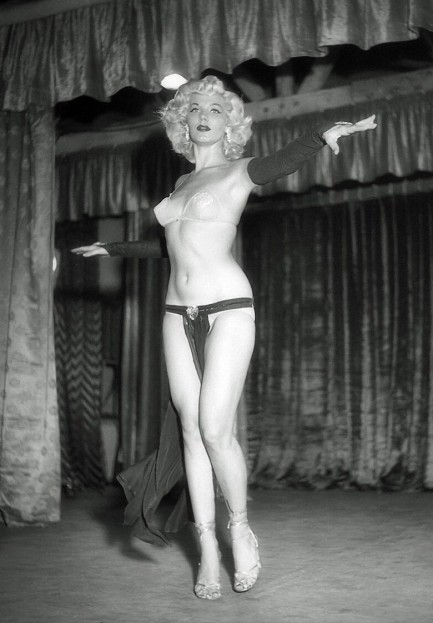
| Vintage Pulp | Apr 12 2019 |

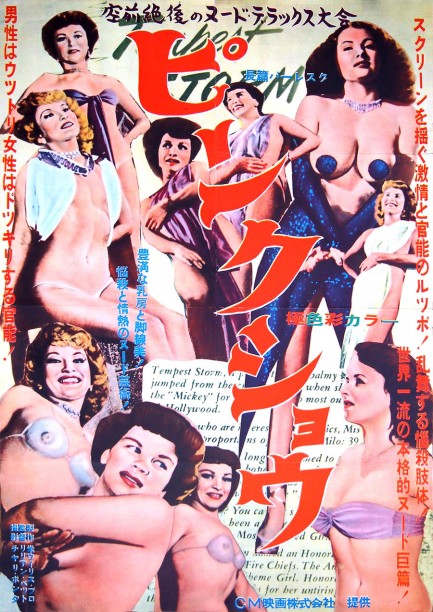
| Vintage Pulp | Dec 1 2016 |

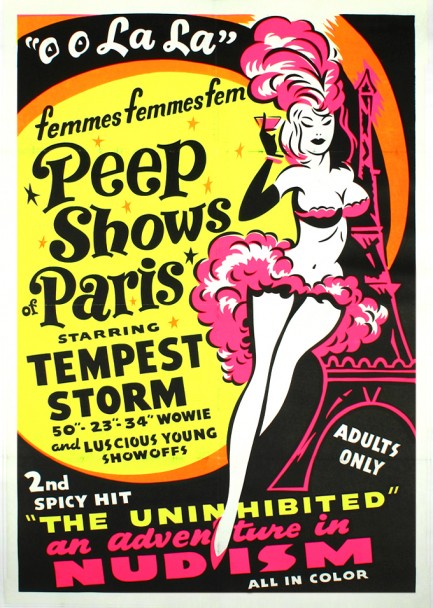
And speaking of repeating ourselves, above you see a poster for the documentary The French Peep Show, which on this promo is called Peep Shows of Paris. Same movie though, and it starred Tempest Storm, a young exotic dancer trying to make it big with her fifty inch bust (see below). We talked about the movie last year and shared a killer poster made for its run in Japan in 1954. We suggest having a look at that. As far as the release date goes, most sources say the film first played in 1952, but IMDB says it was today in 1949 in Oakland, California. Why the discrepancy? We don't know. Meyer shot the footage at the El Rey Theater, which was in in Oakland, so perhaps IMDB knows something about the footage being projected back in ’49 before he packaged it for a wider run.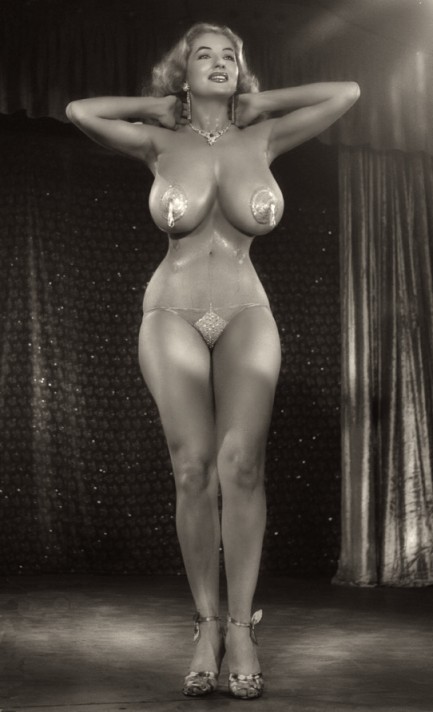
| Vintage Pulp | Apr 13 2015 |

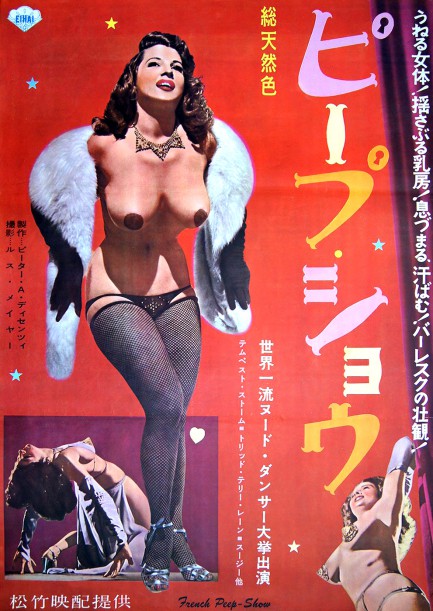
This rare Japanese poster promotes the American movie French Peep Show, which was boob aficionado Russ Meyer’s first sexploitation film in a long, infamous series of them. Shot at Oakland, California’s El Rey Burlesk Theater, it was ostensibly a documentary about dancer Tempest Storm’s quest to make it as a performer, but of course was really just an excuse to film a burlesque show and use the medium of cinema to export it to the masses. The film is presumed lost, which is too bad, because in addition to Storm, it featured Lily Lamont, Terry Lane, Shalimar, Marie Voe, and others. The poster is composed of three famous shots of Storm, one of which we shared a while back, the others of which you see below. You can read a bit more about French Peep Show here. It premiered in the U.S. in 1949, but reached Japan this month in 1954.
| Femmes Fatales | Feb 28 2013 |

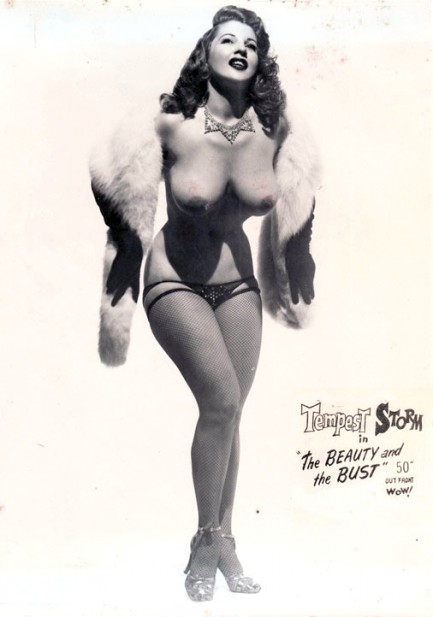
Above, a promo image of famed burlesque dancer Tempest Storm, she of the legendary 50-inch bust. She was born as Annie Blanche Banks (also a very good name for a stripper, we think) today (well, actually tomorrow, but there’s no tomorrow this year) in 1928. This photo is undated but probably was made around 1955.
| Vintage Pulp | Aug 13 2011 |

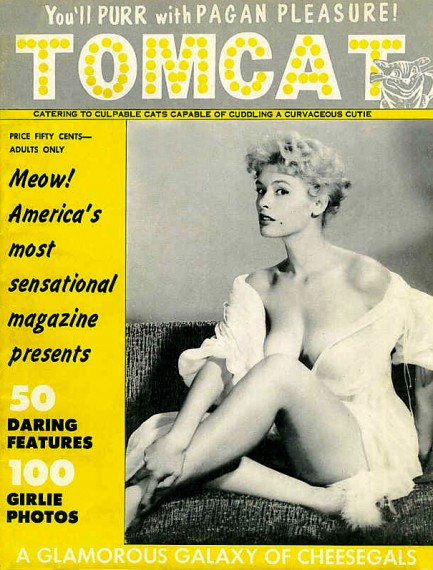
From 1957, Tomcat magazine is a prime if slightly obscure example of mid-century porn in all its non-fully revealing glory. We think they’re trying a little too hard to be cute here—referring to the models as “cheesegals”? That’s just dumb. But mixed in amongst the anonymous smut were some striking images of famous burlesque performers of the day, which we thought were worth sharing. Enjoy, and please check out our comprehensive burlesque post from last year here.
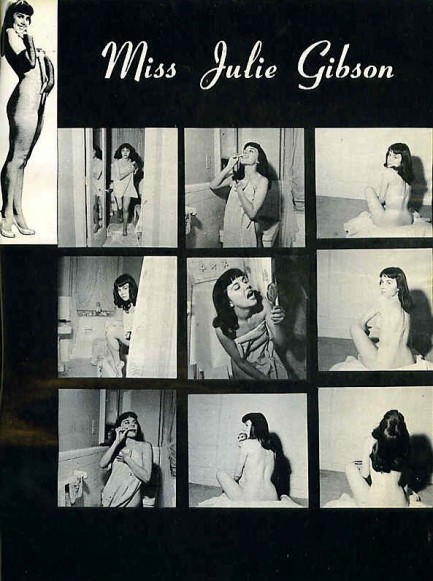
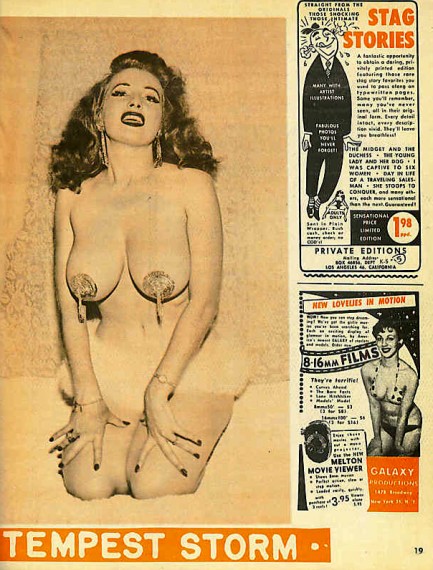
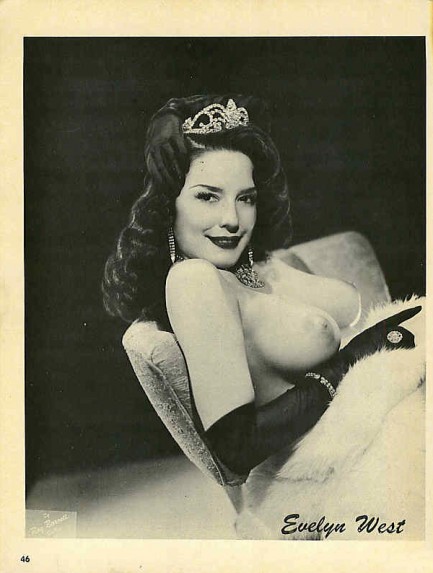
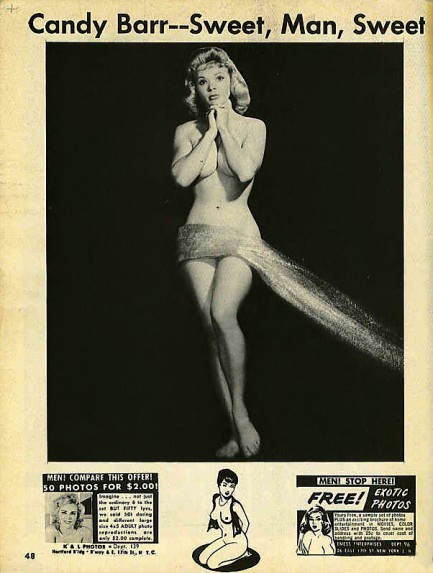

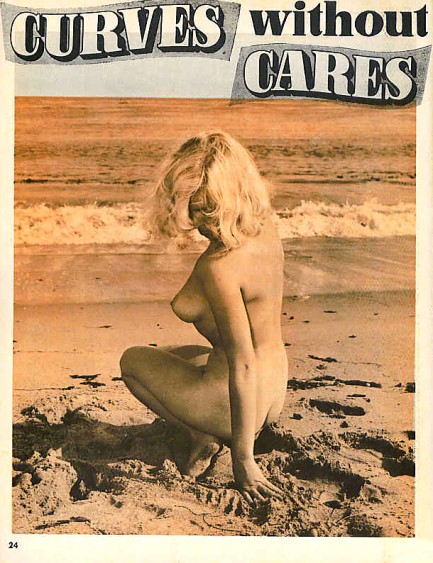
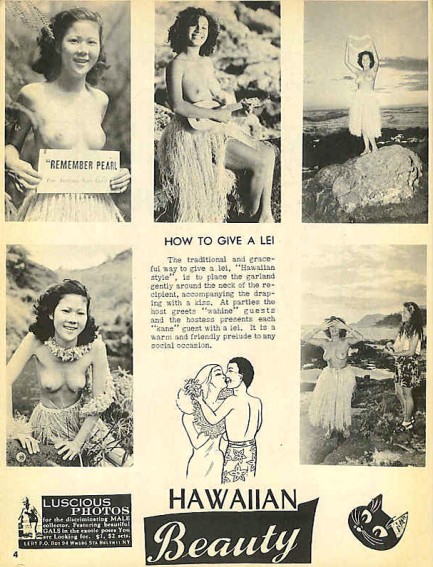
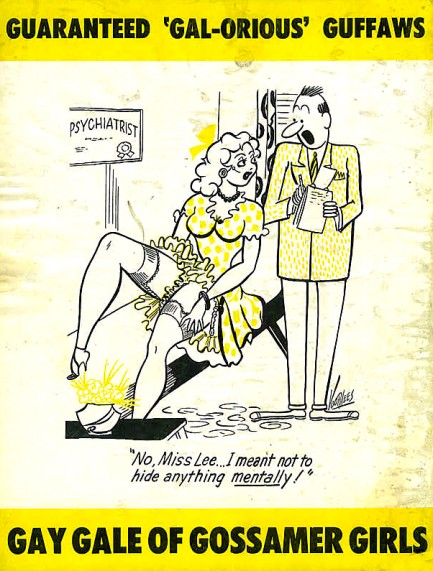
| Intl. Notebook | Jun 28 2010 |

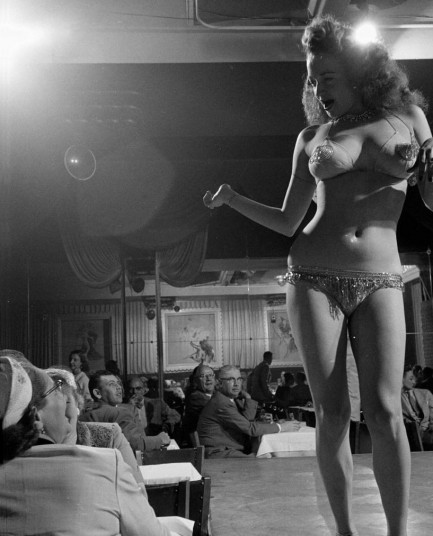
Nobody really knows where the word burlesque came from—some claim its roots are the Italian and Spanish words “burla," which mean “hoax” and “deception” respectively. We’ve also seen burla translated as “jest.” Whatever its etymological roots, the much loved art of burlesque began in Victorian England as a type of musical variety show that satirized highbrow art forms such as opera, ballet, and costumed drama. On U.S. soil burlesque took similar shape, but also began to incorporate semi-clad dancers. Soon, these sexually suggestive dances became the focus of the performances, and the word burlesque became a synonym for striptease.
Stars such as Sally Rand, Amy Fong and Dixie Evans became celebrity practitioners of the art. The dancers generally didn’t strip totally nude on stage, but a few, like Bettie Page, did take it all off in short burlesque reels. Above, in panel 1, is a shot of Betty Blue Eyes Howard, and below we have more assorted burlesque photos featuring some of the biggest stars of yesteryear’s striptease firmament. Of special note are Busty Brown in panel 2, Betty Rowland in panel 12, and being escorted into court to face obscenity charges in panel 13, Bettie Page from one of her reels in panel 20, Lilly Christine in panel 21, Lili St. Cyr in panel 22, two shots from one of Nazi Germany’s legendarily decadent mid-1930s burlesque shows in panels 23 and 24, and finally Tempest Storm in the last panel. We hope these images take the edge off those Monday blahs.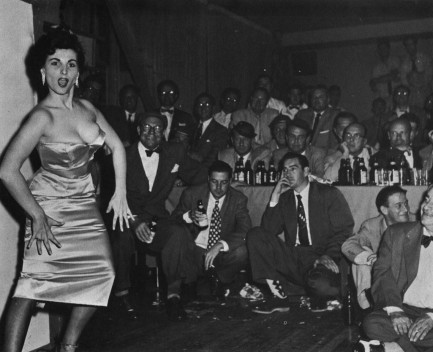
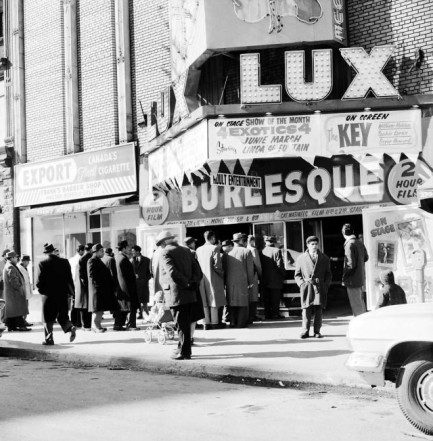
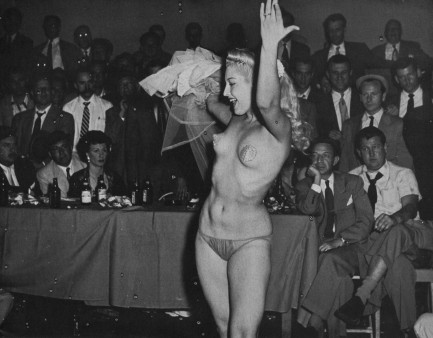
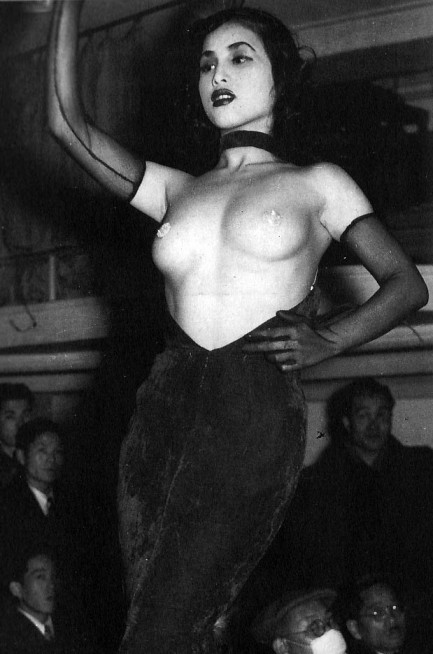
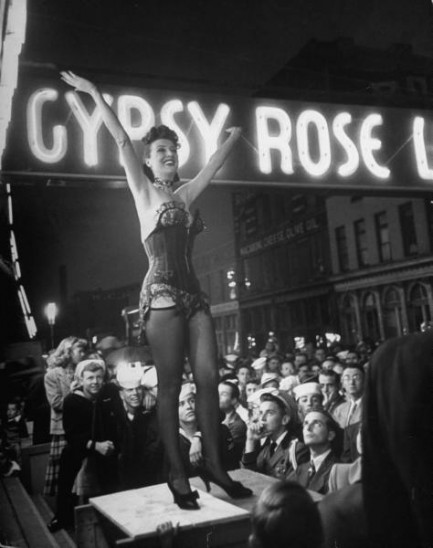
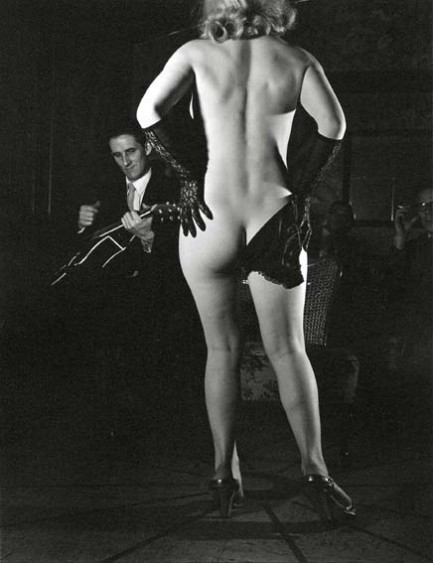
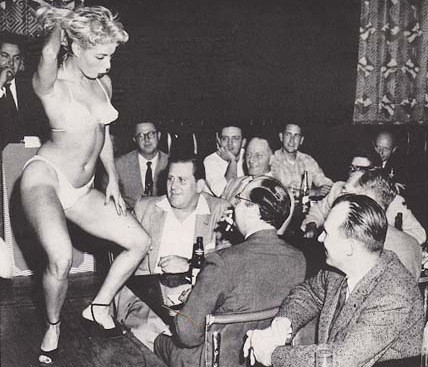
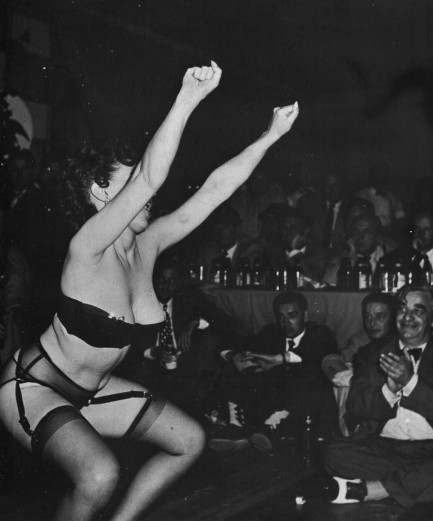
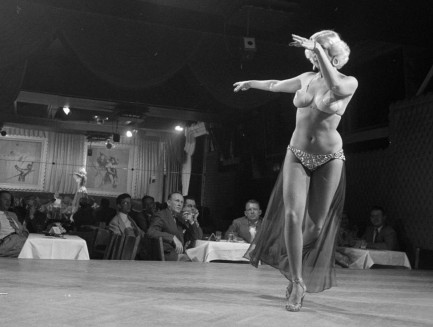
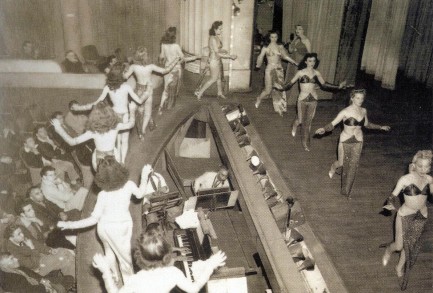
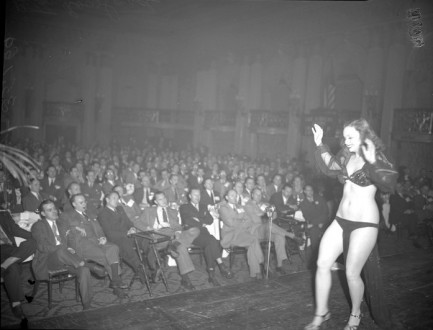
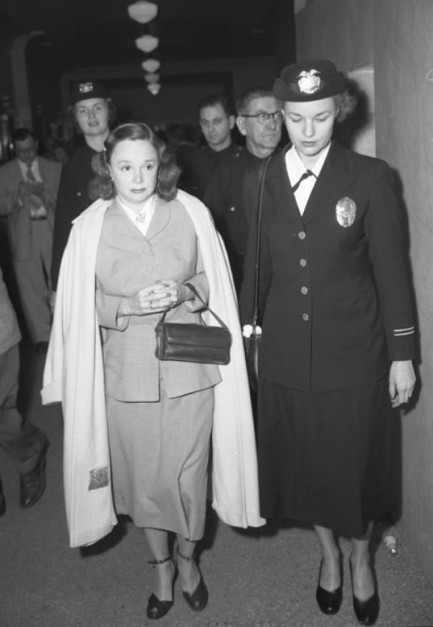
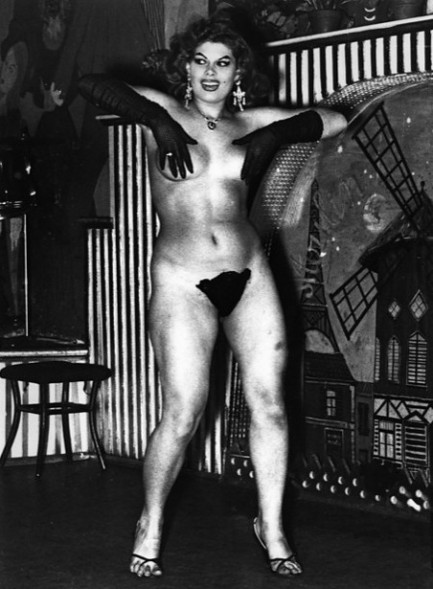
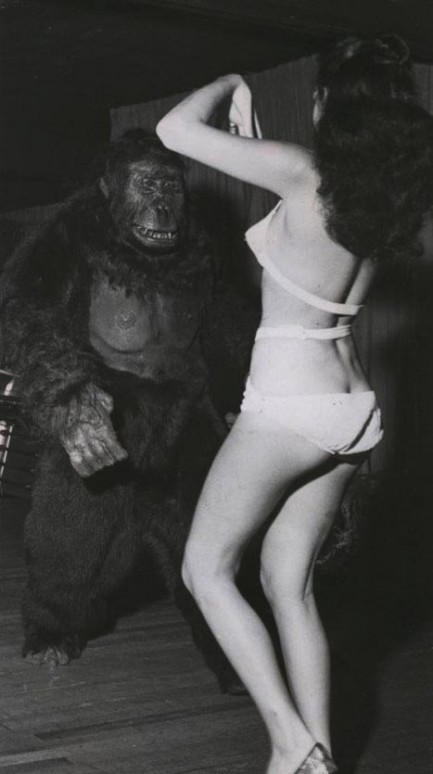
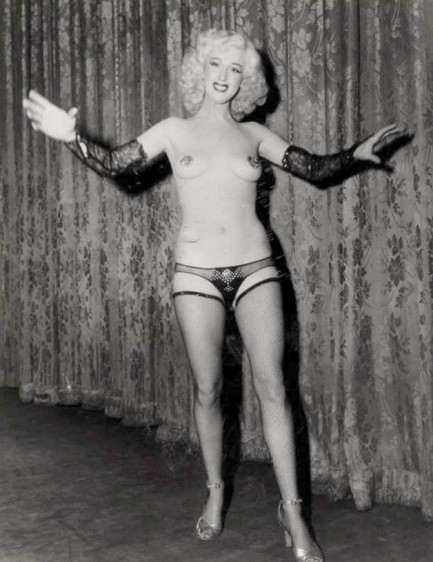

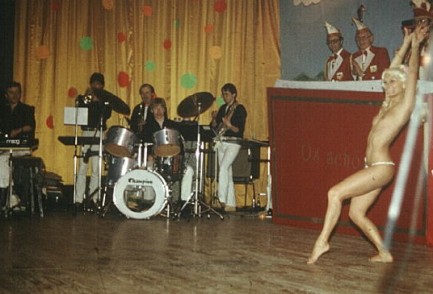
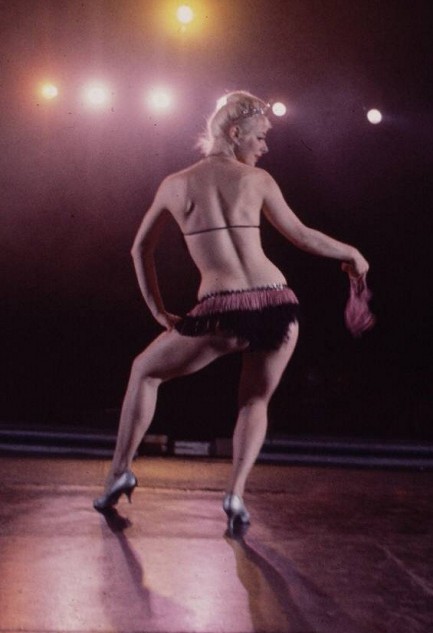
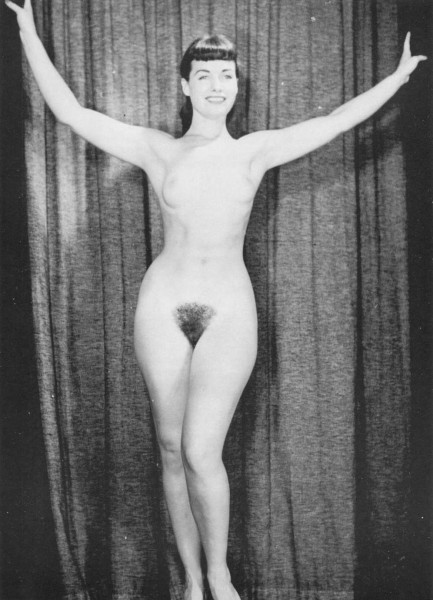
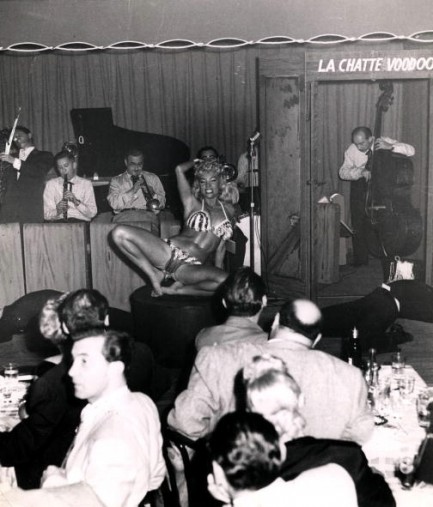
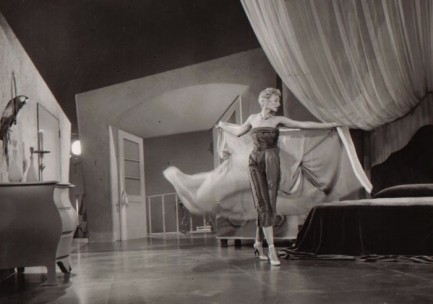
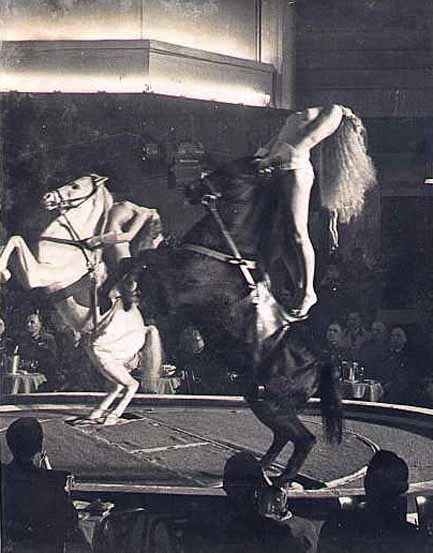
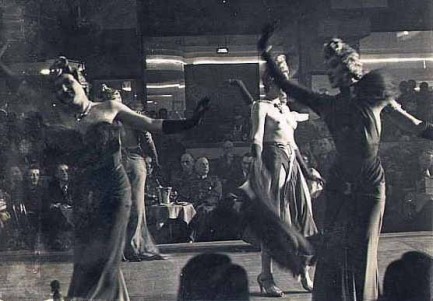
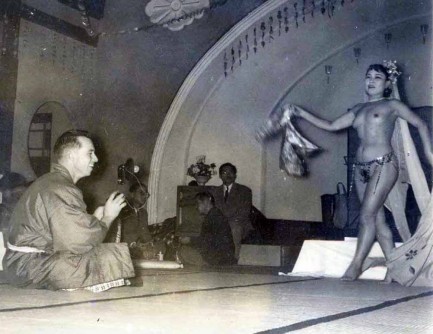
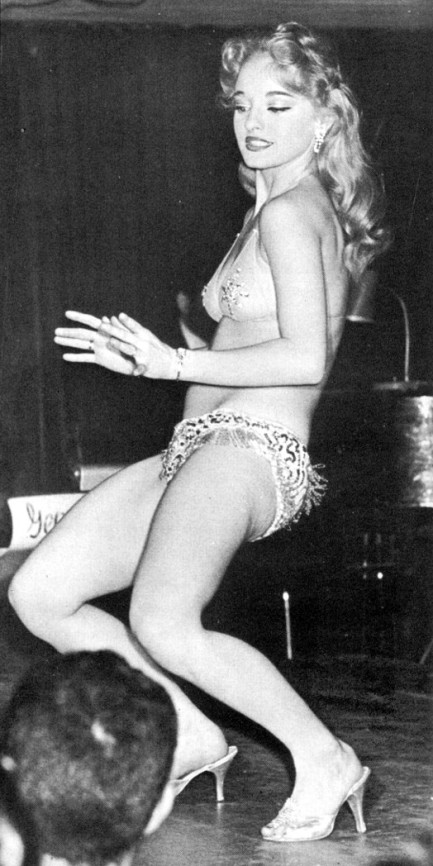
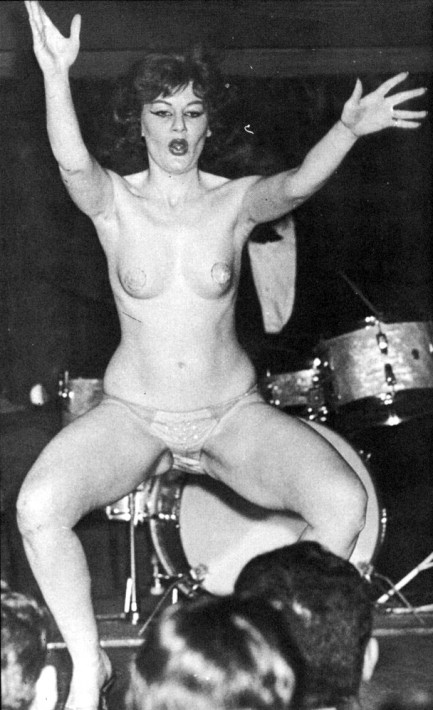
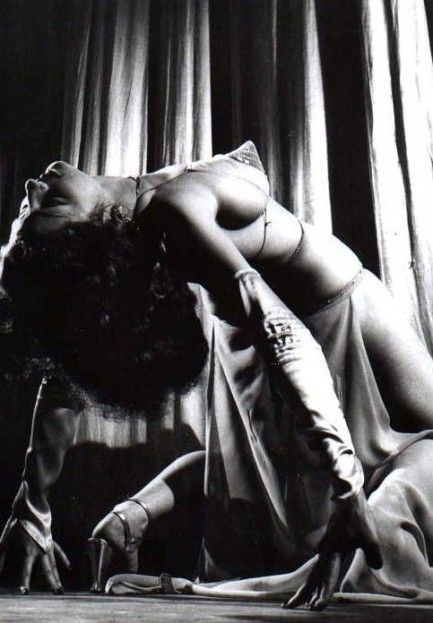
| Intl. Notebook | Jun 23 2010 |

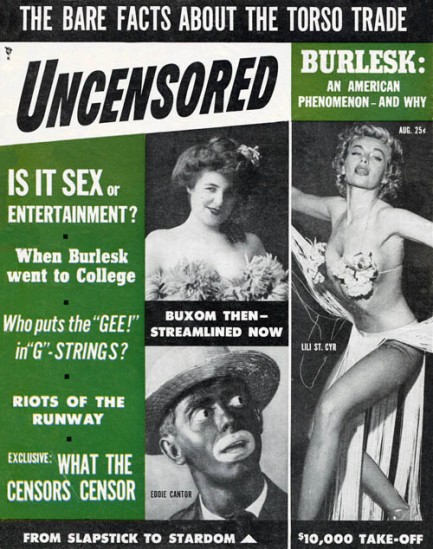
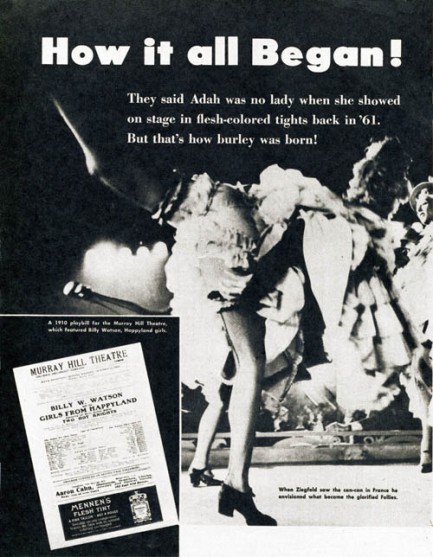
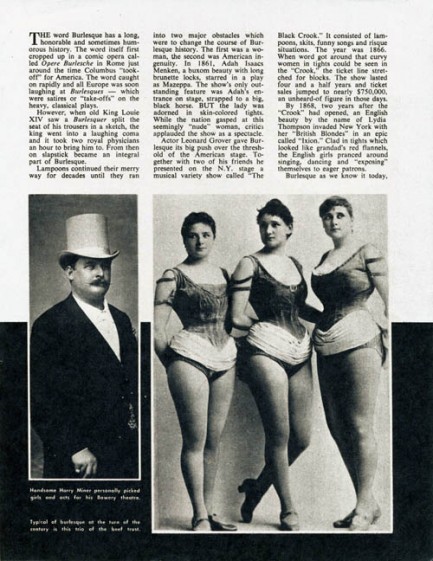
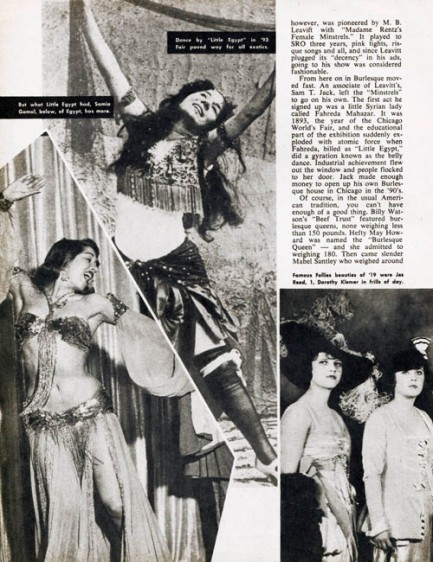
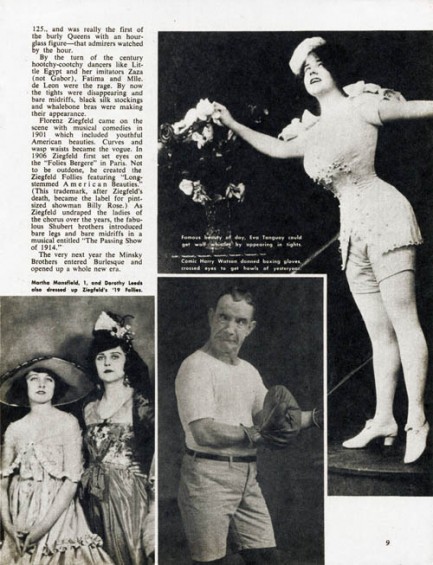
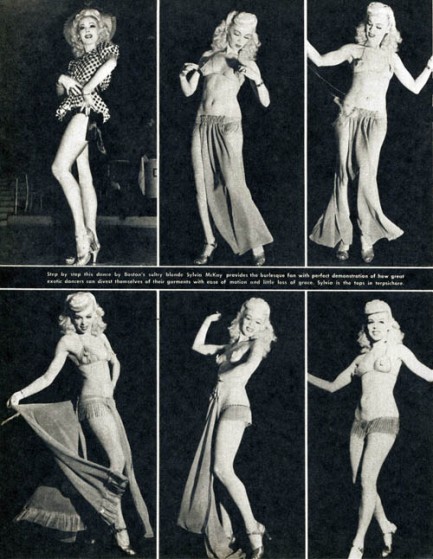
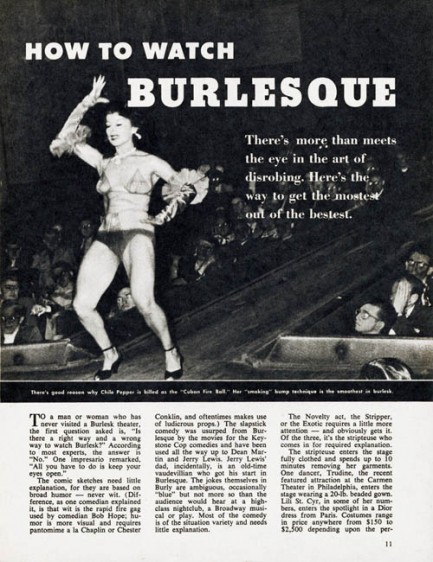
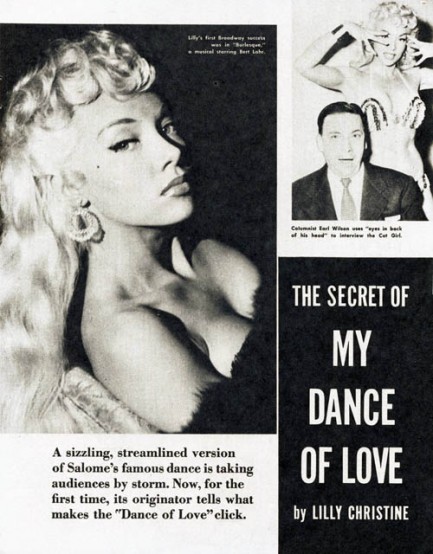
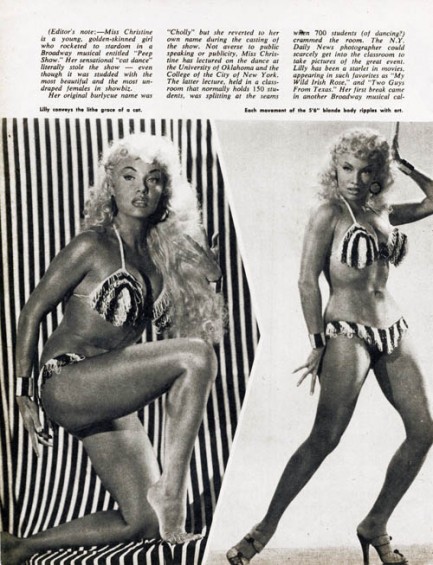
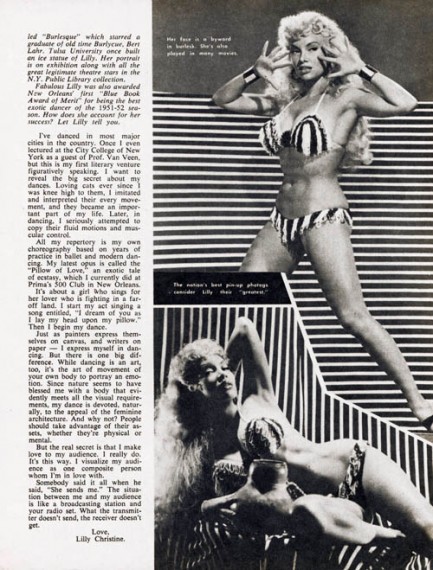
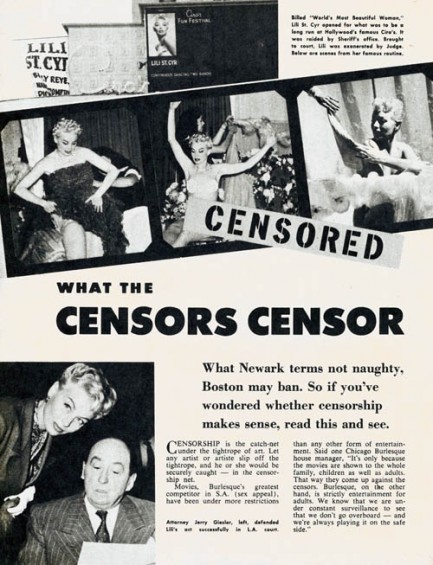
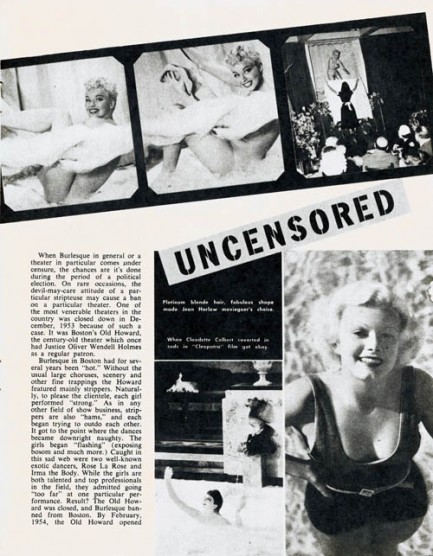
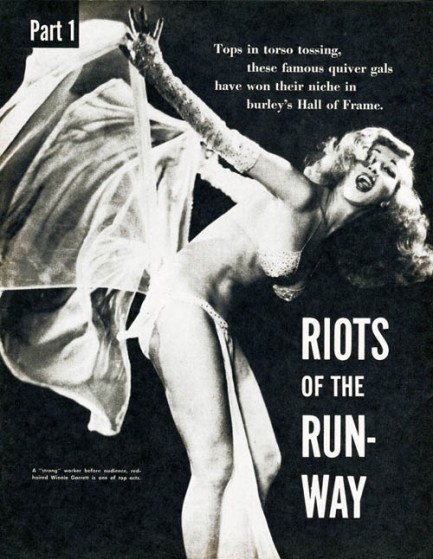
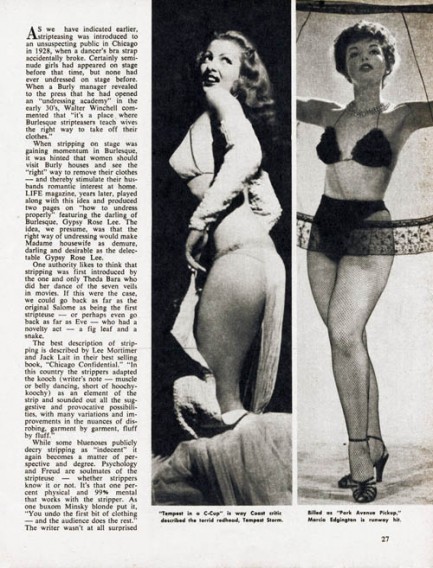
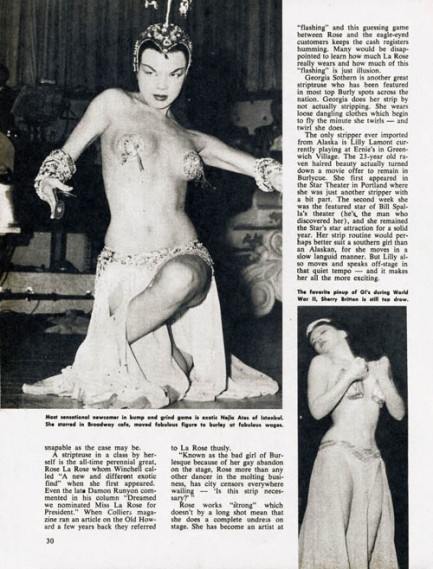
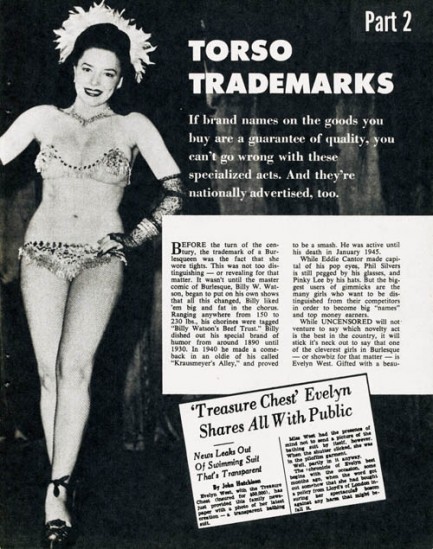
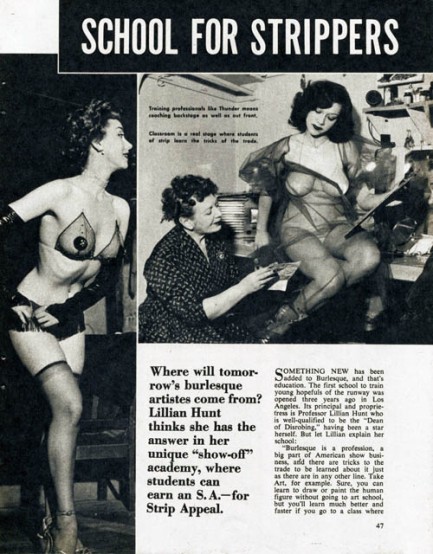
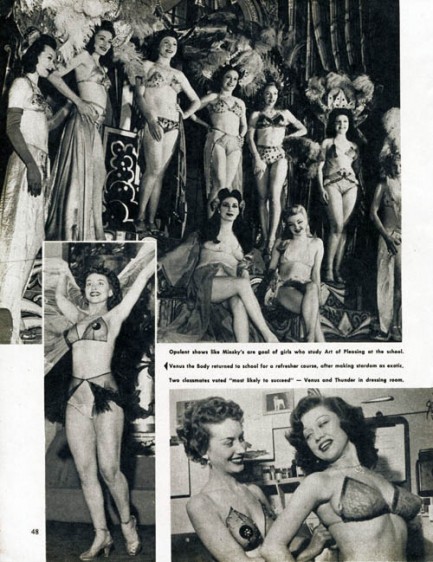
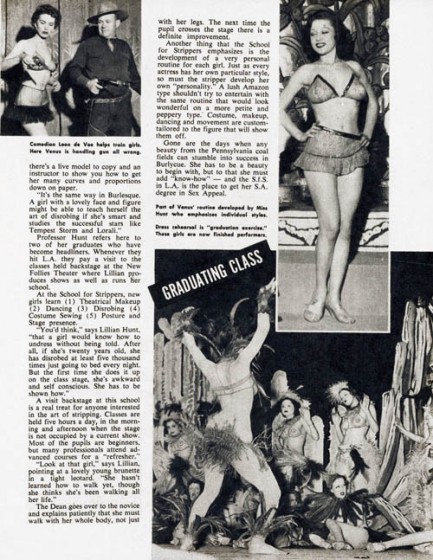
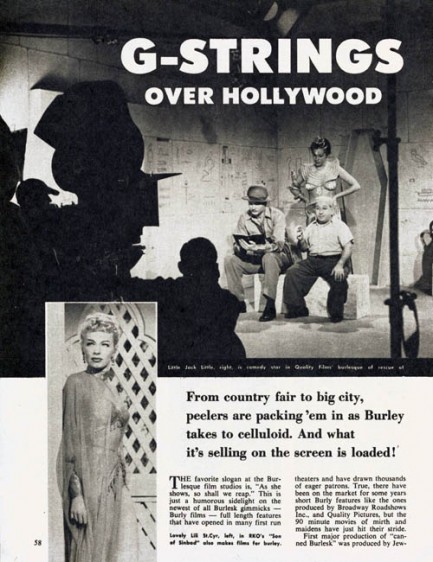
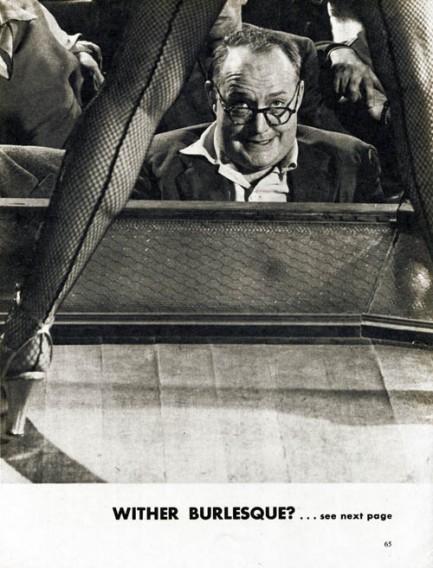
June 1954 issue of Uncensored entirely devoted to the art of burlesque, with legendary dancers Lili St. Cyr on the cover and in panels eleven and twenty, Chile Pepper in panel seven, Lilly Christine in panels eight through ten, and Tempest Storm in panel fourteen. Finding this magazine reminds us that we've collected quite a few vintage images of burlesque shows, so since sooner is better than later, look for us to post the entire hoard in the next few days.








































































